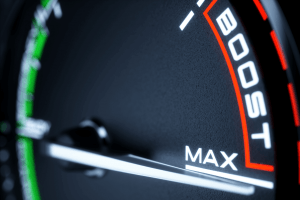DEX Volumes Receive Automated Market Makers Boost
The rapid development of automated market makers (AMMs) is one of the main forces driving the expansion of decentralized exchanges (DEXs), which surpassed 5% of total crypto exchange volume last month, per a new report.

Over 90% of DEX volume is currently generated by AMMs, according to research published by crypto analysis company Messari. However, it is yet to be seen if these robust growth states will translate into value for AAM tokens.
The Messari report authors wrote,
“AMMs differ from exchanges that determine prices by matching buyers and sellers through central limit order books (CLOBs). Instead, AMMs allow anyone to become a market maker by simply depositing their idle assets into liquidity pools. Price is then determined by the ratio between assets being traded. Market makers earn fees as smart contracts automatically execute trades.”
In a recent tweet, Jack Purdy, a research analyst at Messari, wondered whether this financial success would turn out to be sustainable and whether it would be possible for AMMs to translate it to value for their governance tokens.
Purdy wrote,
“Crypto has massively decreased the time it takes to generate substantial revenue. AMMs that have been live for a few years (some months) are now generating nine figures.”
As of September 13, the top five AMMs in terms of annual revenues included Uniswap at USD 406m, SushiSwap with USD 228m, Balancer at USD 114m, Swerve with USD 29.6m and Curve with USD 15m, also per Messari.
The firm’s analysts noted that AMM revenues have a weak relationship with the value of their respective tokens.
In the case of SushiSwap, the price-to-sales ratio of its token stands at 0.91x, while for Balancer, which generated roughly half of the former’s revenues, the ratio is 19.1x. Swerve, which represents slightly more than a quarter of Balancer’s revenues, has a price-to-sales ratio of 5.9x. Meanwhile, in the case of Curve, whose revenues are about half of Swerve’s, the price-to-sales ratio is the highest among the top five AMMs – a staggering 388.3x.
Purdy forecasted that AMMs’ future success (or otherwise) hinges on their ability to fill two key niches.
He explained,
“Incentivized liquidity provision. Tokens can easily bootstrap a market by allocating tokens to [liquidity providers] which we’ve seen succeed in increasing liquidity and trading volume. Low slippage on price-stable assets (stablecoins, pegged assets). Compressed pricing curves such as [Curve] can actually provide a superior product compared to CLOBs.”
___
Learn more: Here’s Why Decentralized Exchanges Are Growing So Fast Right Now



